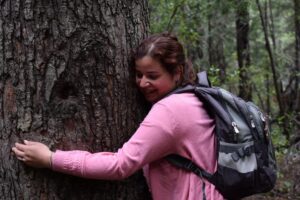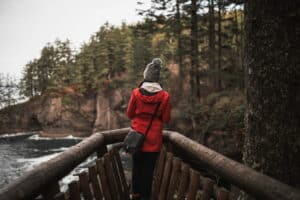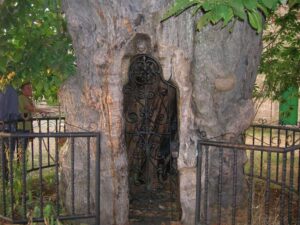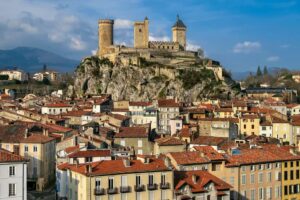
Walking the Camino de Santiago can be a transformative experience, but also a significant challenge for those living with a neurodivergent condition. Far from being an obstacle, neurodivergence can lead to a unique experience, richer and more personal, provided that the right information and tailored planning are in place.
In this article, we address how to prepare for and enjoy the Camino de Santiago from the perspective of neurodivergent people. We explore the best routes, practical advice, real testimonies, and key tips to make the most of the journey, respecting individual pace and needs.
Índice de contenidos
- 1 What Being Neurodivergent Means on the Camino
- 2 Benefits of the Camino According to Each Neurodivergent Profile
- 3 Preparing for the Camino: Key Aspects to Consider
- 4 Camino de Santiago Routes: How to Choose According to Your Neurodivergent Profile
- 5 Real Experiences: Testimonials from Neurodivergent People on the Camino
- 6 Practical Tips During the Camino
- 7 The Value of the Environment: How the Camino Supports Neurodivergent Wellbeing
- 8 What Can the Camino Bring to the Personal Development of a Neurodivergent Person?
What Being Neurodivergent Means on the Camino
The term neurodivergent refers to people who process the world differently from most. This includes conditions such as Autism Spectrum Disorder (ASD), ADHD, dyslexia, social anxiety, obsessive-compulsive disorder, Tourette’s, and even synesthesia or mixed profiles. The diversity is broad and rich, but also brings specific needs.
Some neurodivergent people may experience:
- Hypersensitivity to noise, lights, or touch.
- A need for stable routines and predictability.
- Difficulties with improvisation or adapting to last-minute changes.
- Anxiety in unfamiliar social situations.
But they can also have:
- A capacity for deep observation of their surroundings.
- Great resilience when facing prolonged challenges.
- Detailed perception of natural stimuli.
- Authenticity in their way of living and feeling.
Therefore, rather than an obstacle, neurodivergence can enrich the experience if the route is adapted to individual needs.
Benefits of the Camino According to Each Neurodivergent Profile
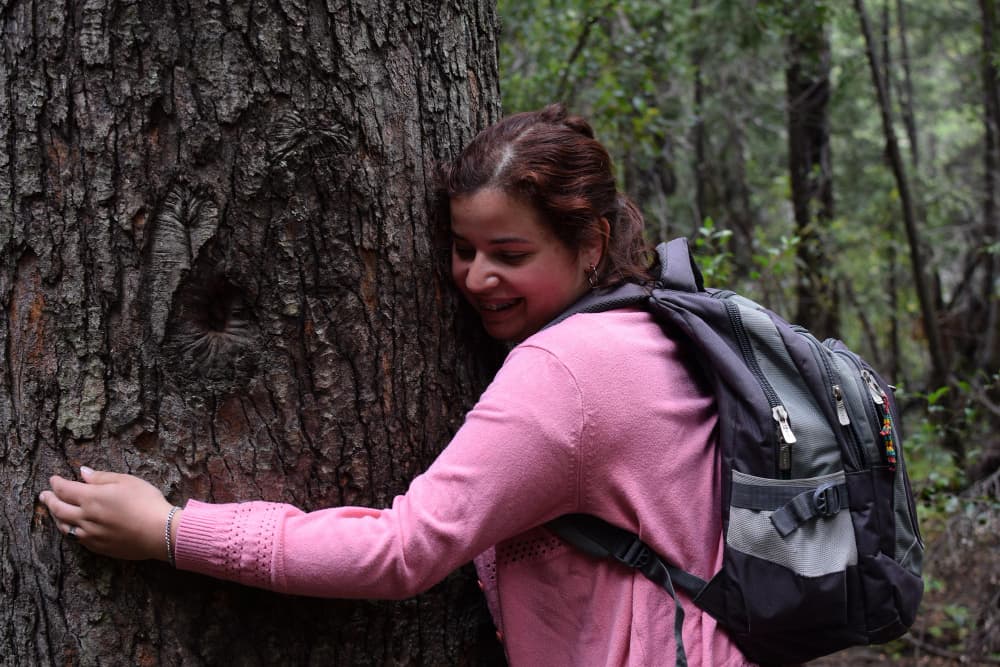
Autism Spectrum Disorder (ASD)
The adventure can offer people with ASD a deeply structured and predictable experience if planned in advance.
The repetition of daily routines — waking up, walking, resting — creates a sense of control. In addition, natural environments support sensory and emotional regulation, while the freedom to socialise or keep distance allows interaction without pressure.
ADHD (Attention Deficit Hyperactivity Disorder)
Constant physical activity helps channel energy in a healthy way. At the same time, the variety of landscapes and stimuli keeps attention active without boredom. The experience can strengthen planning and organisational skills and foster connection with the present moment.
Dyslexia
Although reading difficulties can be challenging at times, all routes offer many visual tools (signs, arrows, maps) that facilitate orientation. The process does not require constant reading or writing, allowing people with dyslexia to connect with the environment through observation, listening, and practical experience.
Social Anxiety
It allows control over the level of social interaction. There are stages where one can walk alone or accompanied, and there is no pressure to hold conversations. This accepting environment can encourage gradual exposure to new relationships from a safe space, boosting confidence and self-support.
Obsessive-Compulsive Disorder (OCD)
The repetition of daily tasks (packing the backpack, walking, resting) can provide a sense of order and stability. Furthermore, contact with nature and change of environment help distance intrusive thoughts, aiding focus on the present.
Tourette Syndrome
People with Tourette’s may feel freer from social judgement, as pilgrims tend to be tolerant and diverse. Physical exercise, steady rhythm, and relaxed surroundings can also contribute to a reduction in tics or better management of them.
Preparing for the Camino: Key Aspects to Consider

Before embarking on the adventure, preparation is essential. A well-planned Camino reduces uncertainty, allows greater enjoyment of the surroundings, and minimises the risk of overload.
- Appropriate clothing and equipment. People with tactile sensitivity should choose comfortable garments, without irritating seams or synthetic materials. The same applies to footwear: it must fit the foot well, have been worn previously, and be breathable. Cut-off labels and flat seams make a difference.
- Anticipation and structure. Many neurodivergent profiles benefit from having a clear plan. Using simplified maps, specialised apps, and carrying printed stages can help. Creating a flexible yet structured itinerary provides a sense of control.
- Nutrition and rest. Maintaining a stable eating routine is important. If there are dietary restrictions, bringing your own snacks (nuts, bars, gluten-free biscuits, etc.) is recommended. Of course, good sleep is fundamental: choosing accommodation with a calm atmosphere can prevent emotional dysregulation.
- Emotional regulation. Carrying a comfort object, a notebook for drawing or writing, headphones with relaxing music, or breathing techniques can help manage moments of overwhelm. Sensory breaks throughout the day — in nature or quiet places — promote wellbeing.
- Mindful companionship. Walking with someone who understands and respects your pace can be positive. However, some prefer walking alone and maintaining their own rhythm. Both options are valid: the important thing is to choose freely.
Camino de Santiago Routes: How to Choose According to Your Neurodivergent Profile
One of the most important aspects when planning the Camino is choosing the right route. Each route has characteristics that can positively or negatively influence the experience.
French Way
The busiest route, with extensive infrastructure. Ideal if you prefer multiple accommodation options, constant signage, and company. However, in high season it can be overwhelming for those seeking peace and quiet.
Portuguese Way
Perfect for those who value gentle stages and good organisation. The coastal section offers natural beauty and less crowding. It balances culture, heritage, and nature. Its stages are well signposted and accessible, with the possibility to divide them into shorter sections. A good option for those needing to maintain a steady pace and enjoy a variety of environments.
The Camino de Santiago from Porto to A Guarda is an excellent alternative combining coastal nature and charming villages. It is ideal for those seeking a balance between moderate stimuli and clear waymarking. Afterwards, the section of the Camino from A Guarda to Santiago allows walking in a peaceful setting, perfect for people who become easily overwhelmed.
Camino del Norte
With stunning views of the Cantabrian Sea, this route demands more physical effort but rewards with solitude, open spaces and quiet stretches. This route, especially the section of the Camino de Santiago from Santander to Gijón, is ideal for those seeking a more introspective experience and who can handle the elevation changes.
Camino Primitivo
The oldest and also one of the toughest. Mountainous terrain and fewer services. Recommended for those with prior experience who desire a deep connection with nature and solitude.
Camino Inglés and Finisterre/Muxía
Both routes are shorter. The first starts in Ferrol or A Coruña; the second begins in Santiago heading towards the coast. They are less frequented alternatives, ideal if you prefer to avoid crowds.
Real Experiences: Testimonials from Neurodivergent People on the Camino
Shared experiences on social media, forums, and blogs show that the Camino can be especially meaningful for people with this condition. Some testimonials reflect:
“I had never been able to maintain a routine before. On the Camino, I discovered I could organise myself, get up early, walk every day… and enjoy it.”
“I was worried about having to talk to many people, but I found balance. Sometimes I joined others and other times I walked alone. Nobody questioned it. I felt free.”
“I have mild autism and struggle with improvisation. I prepared everything in stages, and even so there were unexpected events. But I learned to adapt without anxiety. The environment helped a lot.”
Stories like these show that there is no “right way” to do the Camino. Each person can and should build their own experience, with authenticity and respect for their needs.
Practical Tips During the Camino

Besides prior preparation, it is important to consider certain resources during the journey:
- Flexibility with changes: weather, accommodation or health may alter plans. Carrying a written “plan B” with alternative options can reduce stress.
- Visual signs or communication cards: in case of difficulty speaking during moments of overload, having written messages (in several languages) can help.
- GPS apps with stages: make daily tracking easier and provide reassurance.
- Scheduled breaks: rest not only when tired, but also to prevent sensory overload.
- Daily logs: taking notes, recording audios or drawing can serve as emotional release and memory of the process.
The Value of the Environment: How the Camino Supports Neurodivergent Wellbeing
The Camino offers a context hard to find in everyday life: absence of pressure, time for oneself, direct contact with nature, and a community that generally respects individual rhythms.
Many neurodivergent people find in this experience a space for reconnection. The natural environment acts as a sensory regulator: birdsong, the murmur of water, the steady pace of footsteps… All contribute to a deep sense of calm.
Moreover, the spirituality of the journey — whether religious or secular — invites inward reflection. That silence, that chosen solitude, can be immensely restorative.
What Can the Camino Bring to the Personal Development of a Neurodivergent Person?
The benefits of pilgrimage go beyond the physical. For those living with neurodivergence, this journey can provide:
- Increased confidence and autonomy, by facing new situations and solving them independently.
- Self-acceptance, recognising strengths previously unnoticed.
- Redefining personal limits, without needing to fit social norms.
- Appreciation of silence, calm and self-connection.
- Strengthening resilience, by enduring and overcoming discomfort.
All this, without needing to “fit in” or “correct oneself”. Any of the routes, in their essence, honour authenticity.
Doing the Camino de Santiago as a neurodivergent person is not only possible but enriching. Each step can be a statement of identity, a conquest of the present, a different way of inhabiting the world.
There’s no need to take the longest route, walk faster, or talk to everyone. What’s needed is to listen to what you need, respect it, and build your own path, just as valid as any other.
If you want to explore options to organise your tailored experience, check out the proposals at Mundiplus, specialists in Camino de Santiago trips. From tranquil routes to cultural tours, there is always a perfect alternative for you.

